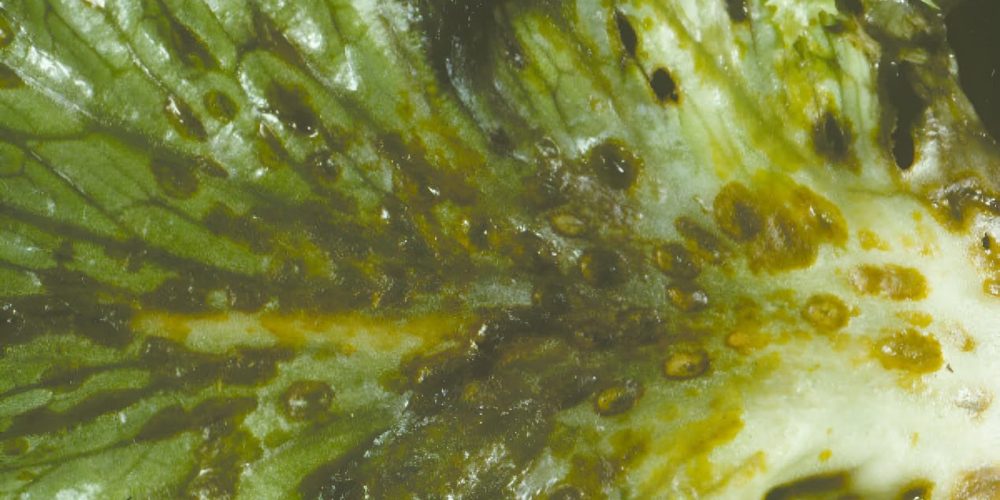Table of contents of the article
ToggleAnthracnose is a fungal disease that affects lettuce plants, causing spots and deterioration of the leaves. In this article from the “WORLD OF PLANTS” website, we discuss the causes of anthracnose in lettuce and methods of effective prevention and control.
Cause of anthracnose disease in lettuce
- Anthracnos
- Scientific name: Colletotrichum
- Type of disease: fungal
- Pathogen: Colletotrichum coccoides
Symptoms are caused by several types of fungi of the genus Colletrichum. They also live in the soil attached to seeds, or on plant debris and alternative hosts for up to four years. There are two ways in which infections are transmitted to new plants. Primary infections occur when soil-borne spores infect seeds and seedlings as they grow, growing systematically in tissues. In other cases, the spores burst and the fungus is sprayed onto the lower leaves by raindrops and initiates an infection that spreads upward. Secondary infection begins when spores produced within leaf spots or fruit by splashing from rain, dew, sucking insects, or field workers spread to upper plant parts or other plants. The growth of the pathogenic fungus is promoted by cold to warm temperatures (20 to 30°C), soil with high pH, prolonged leaf moisture, frequent rainfall and dense clouds. But balanced fertilization makes crops less susceptible to anthracnose.
The breadwinner
. It is found in apples, grapes, beans, apricots, tomatoes, cotton, soybeans, onions, millet, almonds, sorghum, strawberries, olives, bananas, citrus fruits, mango, papaya, lettuce, coffee, lentils, pistachios, guava, turmeric, karela (bitter cucumber) and tobacco.
Suitable conditions for anthracnose in lettuce
The spread of the disease is suitable for temperature ranging between 20 and 30 C and ground humidity not less than 90% (from rain or excessive irrigation)
Effect of anthracnose on lettuce
Symptoms initially become noticeable as small, circular indented areas, which later develop into dark centers. The diseased spots continue to grow larger over time, spreading throughout the entire site of the leaves, which in turn makes the plant unusable in any way, leading to the destruction of the season.
Life cycle of anthracnose in lettuce
It's called sclerosis. The pathogen may also live in debris in the form of filamentous threads called hyphae. In late spring, lower leaves and fruit may become infected by germinating sclerotia and spores found in soil debris. Infections of the lower leaves of tomato plants are important sources of secondary infection spores throughout the growing season. Senescent leaves infected with early blight infections and leaves infected with flea beetle are especially important sources of spores because the fungus can colonize and produce new spores in these infected areas. Enterococcal growth is fastest at 80°F (27°C), although the fungus can cause infection over a wide range of temperatures between 55-95°F (20-30°C). Humid weather promotes the development of the disease, and spraying water in the form of rain or irrigation helps the disease spread. The pathogen also produces a neck full of conidia that helps the infection spread.
Symptoms of anthracnose in lettuce
- Dark circular spots on the surface and edge of leaves.
- Rot at the level of stems and branches.
- Decay of stems, branches and leaves.
- Flowers and fruits fall prematurely.
- Dark circular spots on fruits.
- Anthracnose first appears as small, irregular, yellow spots surrounded by brown or red margins. They often start from the veins of the leaf in the middle, then these spots become dark with time and may also expand and cover the leaf completely, then the leaves turn black, resembling a burn. If the leaves are very small when infected, they can become wrinkled and distorted.
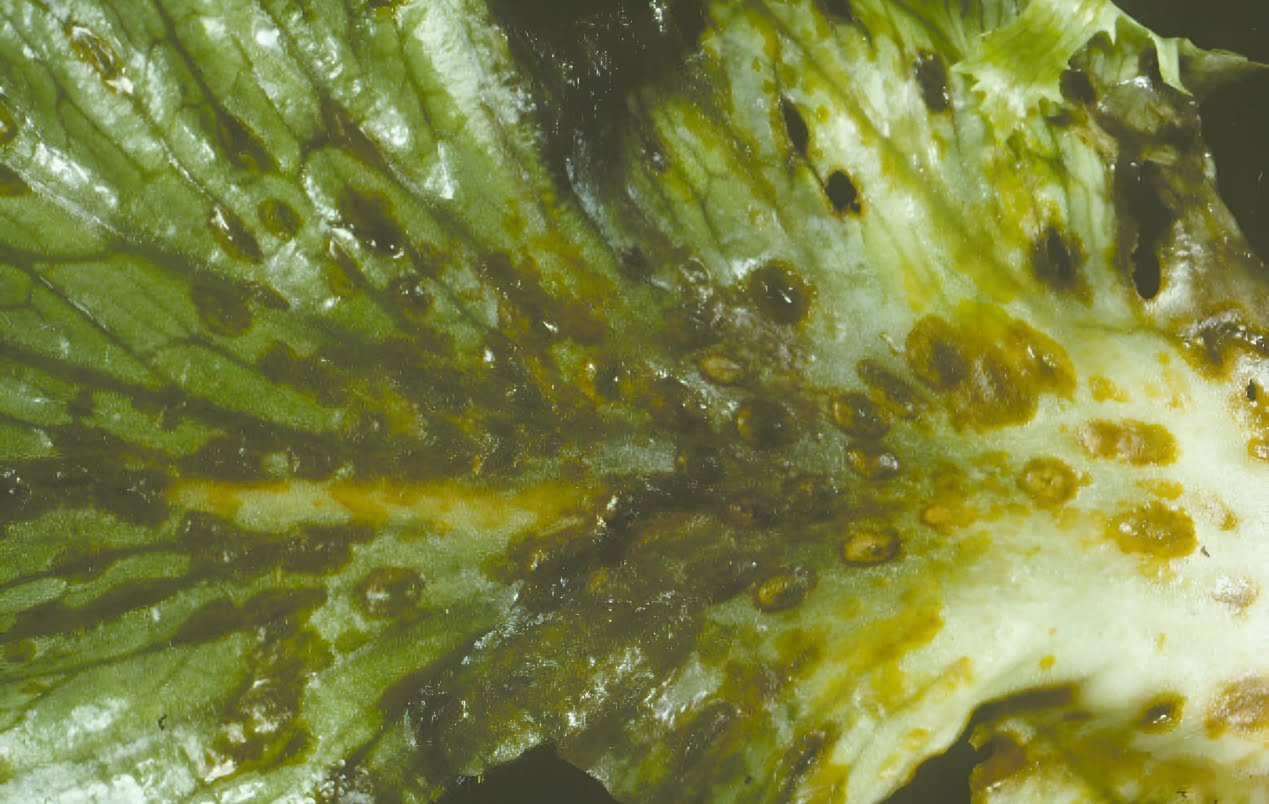
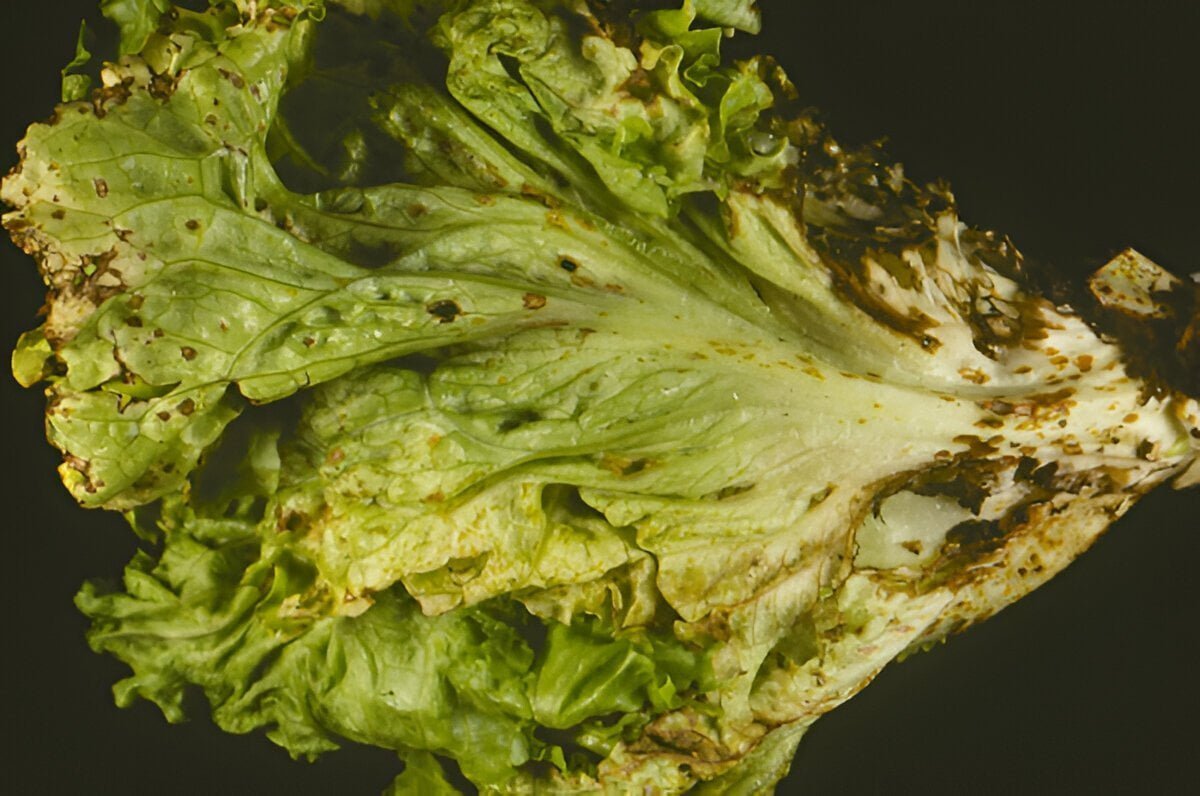 Picture of anthracnose symptoms on lettuce
Picture of anthracnose symptoms on lettuce
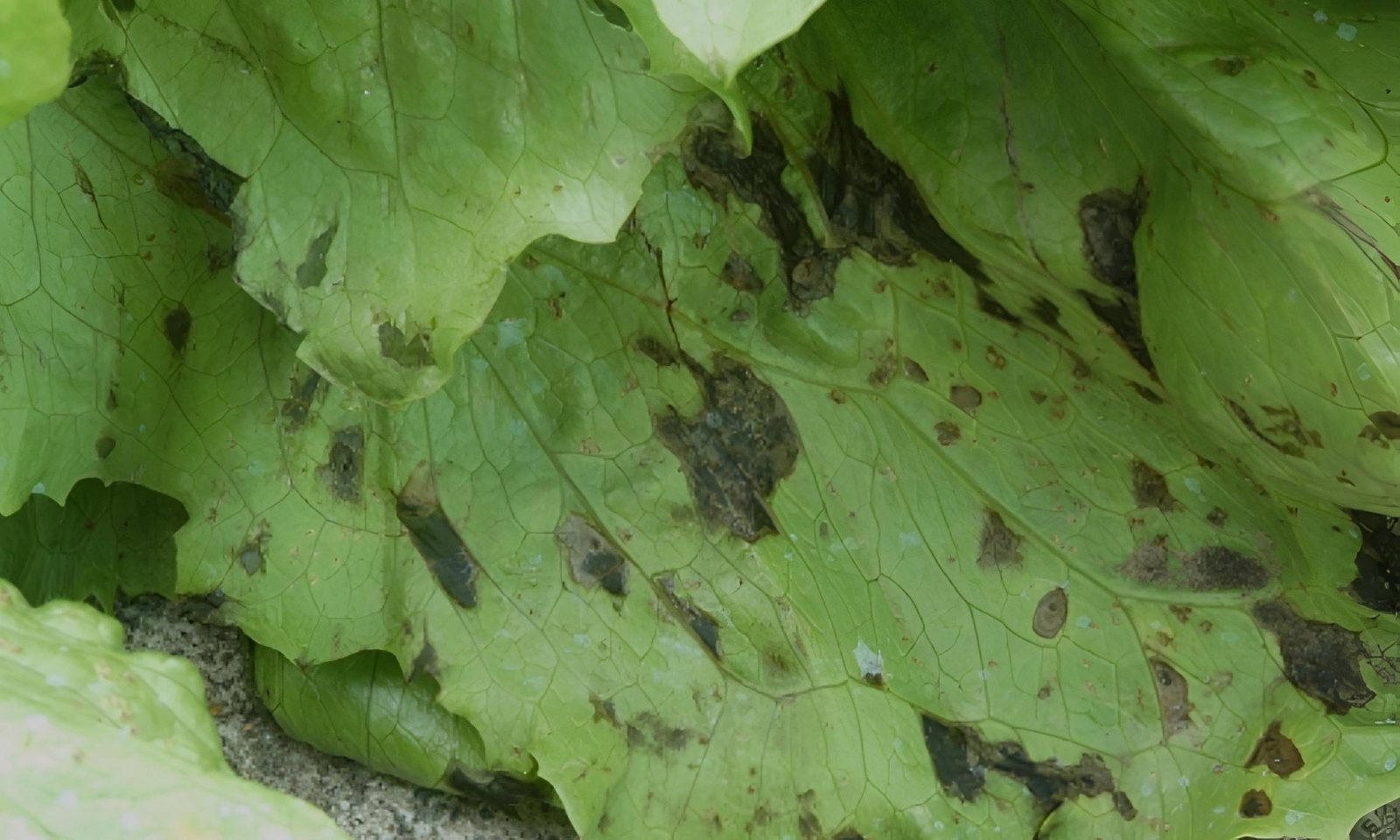
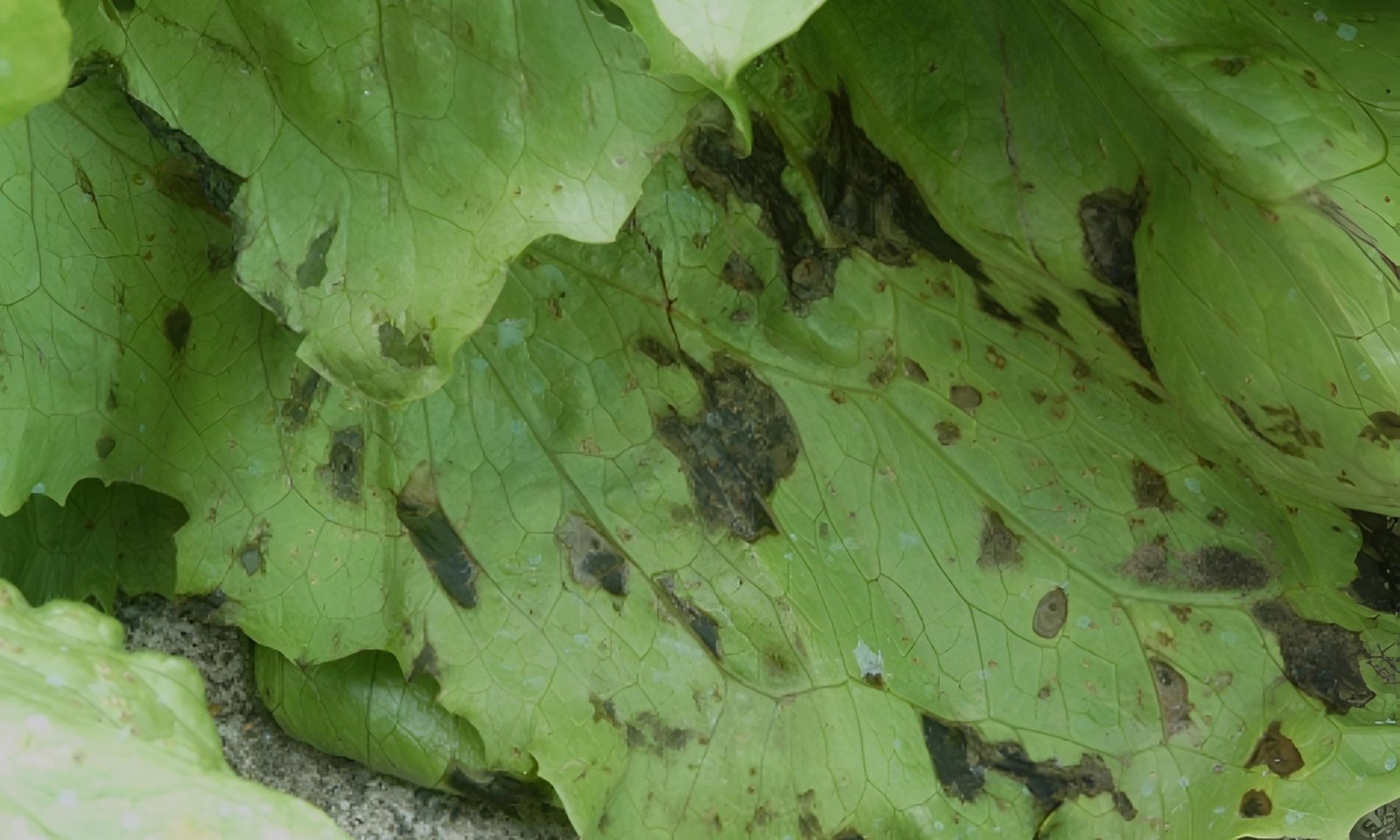
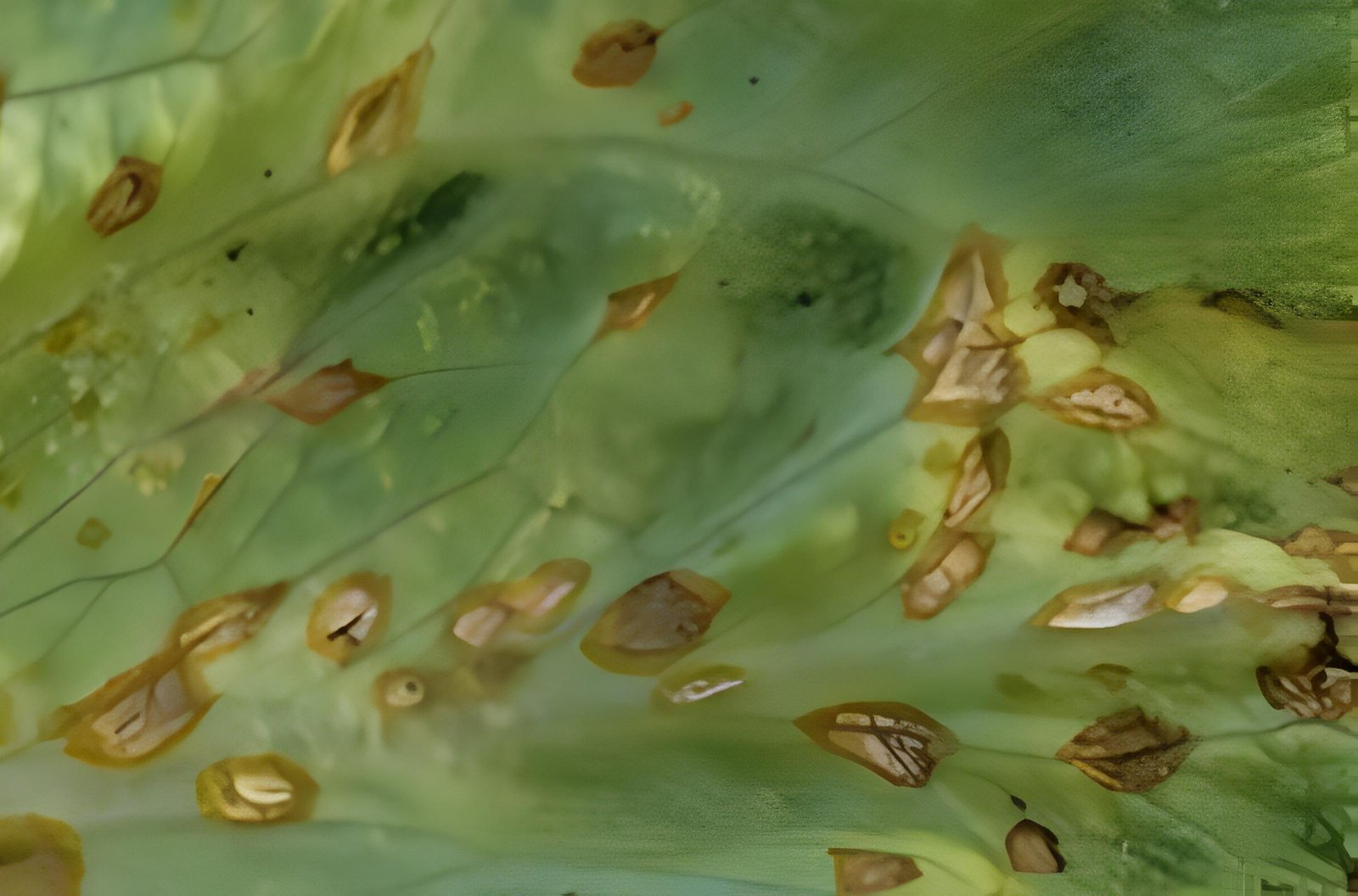
Preventive measures for anthracnose in lettuce
Purchase disease-free seeds, as the fungus that causes anthracnose may be inside the seeds. Seeds can also be treated by soaking them in hot water (122ºF) for 25 minutes to kill the fungus.
Cultivation of anthracnose-resistant varieties in lettuce
- Watering should not be excessive, because flowing water helps in the spread of fungal spores.
- Plant the plants in a sunny location that provides the best air movement and leaf drying conditions.
- Control weeds and weeds, as the presence of weeds may increase moisture levels around plants and slow drying conditions.
- Follow an appropriate agricultural cycle.
- Remove and destroy crop residues once the crop has finished. The remains should not be added to compost.
Organic control of anthracnose in lettuce
Before sowing, immerse the seeds in a warm water bath (temperature and time vary depending on the type of seed). Use products based on Pseudomonas fluorescens, Bacillus subtilis, Bacillus firmicus, or Trichoderma harzianum fungi. Also use copper formulations (copper sprays containing copper diamonia diacetate) approved for the treatment of anthracnose in a variety of crops.
Chemical control of anthracnose in lettuce
One of the appropriate fungicides can be used to limit the spread of the disease, such as: Saprol, Polyram Combi, Polyram DAF, Flint, Strobi, Trimeltox Forte - Mantoux Forte - Primetox Forte - Caprotafen Topsin. Mother - Vincennes. M – Tyson. M – Histamine.
In conclusion, we would like to note that we, at the world of plants website, offer you all the necessary services in the world of plants, we provide all farmers and those interested in plants with three main services::-
- Artificial intelligence consulting service to help you identify diseases that affect plants and how to deal with them.
- Blog about plants, plant diseases and care of various crops ... You are currently browsing one of her articles right now.
- An application that provides agricultural consultations to clients, as well as a service for imaging diseases and knowing their treatment for free – Click to download the Android version from Google Play Store، Click to download the IOS version from the Apple App Store.
References:
- GmbH, PEAT. “Anthracnose disease | Pests and diseases.” Plantix. Archived from the original on 12/31/2023. Viewed on 12/30/2023. PW Alahakon et al.
- Lees, AK; Hilton, A. J. (2003). "Black point (Colletotrichum): an increasingly important disease of potatoes". Plant diseases. Wiley Blackwell. 52: 3-12. doi:10.1046/j.1365-3059.2003.00793.x. British Society for Plant Pathology (BSPP).
- “Tomatoes | Diseases and pests, description, uses, reproduction.” Archived from the original on 12-13-2014. Retrieved 12/22/2014.
- Canon, p; Dammam, U. Johnston, b. Ware, B. (2012). “Colletotrichum – current status and future trends.” Studies in mycology. Westerdijk Institute for Fungal Biodiversity. 73: 181-213. doi:10.3114/sim0014. ISSN0166-0616. BMC 3458418. S2CID8196485.
- Hay, K.S. Strickland, D.; Maloney, E. Hoepting, C.; Bethbridge, S. J. (2016). "Onion anthracnose caused by Colletotrichum coccoides in New York". Plant diseases. American Phytopathological Society (APS). 100 (10): 2171. doi: 10.1094/pdis-05-16-0607-pdn.
- "Tomato Anthracnose Fact Sheet". Vegetablesmdonline.ppath.cornell.edu. Retrieved 12/08/2016.
- Hughes. “Collectotrichum codes” (PDF).
- "UC IPM: UC Management Guidelines for Anthracnose on Tomatoes". California Agricultural University (UC ANR) – Integrated Pest Management (UC IPM). Retrieved 12/08/2016.




